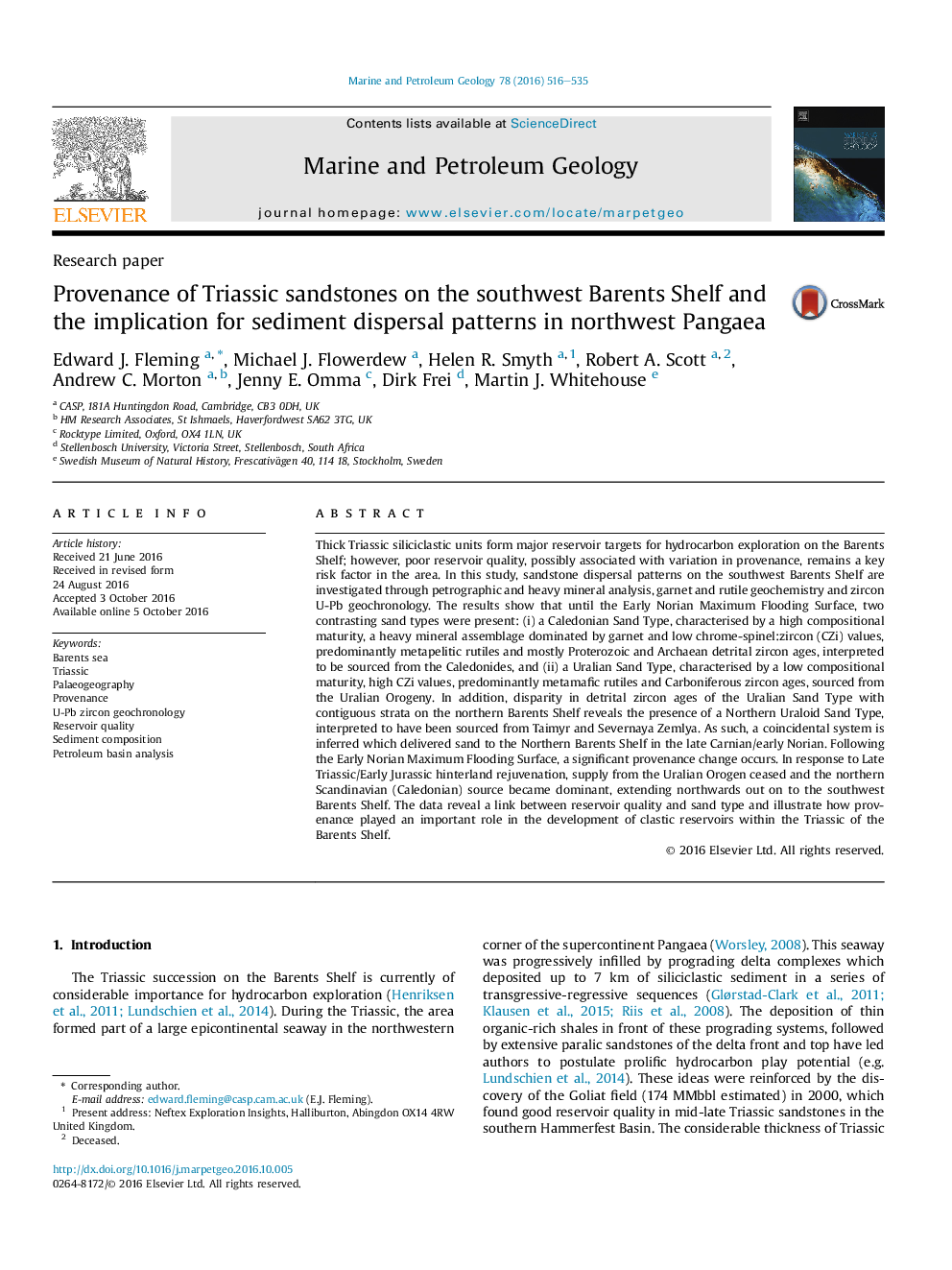| Article ID | Journal | Published Year | Pages | File Type |
|---|---|---|---|---|
| 6434409 | Marine and Petroleum Geology | 2016 | 20 Pages |
â¢The Caledonian and Uralian sand types are delineated on the SW Barents Shelf.â¢The zircon ages are not cognate with data from the Northern Barents Shelf.â¢An additional system delivered the Northern Uraloid Sand Type to these areas.â¢A significant provenance change occurs in the early Norian.â¢A link is seen between reservoir quality and sand type.
Thick Triassic siliciclastic units form major reservoir targets for hydrocarbon exploration on the Barents Shelf; however, poor reservoir quality, possibly associated with variation in provenance, remains a key risk factor in the area. In this study, sandstone dispersal patterns on the southwest Barents Shelf are investigated through petrographic and heavy mineral analysis, garnet and rutile geochemistry and zircon U-Pb geochronology. The results show that until the Early Norian Maximum Flooding Surface, two contrasting sand types were present: (i) a Caledonian Sand Type, characterised by a high compositional maturity, a heavy mineral assemblage dominated by garnet and low chrome-spinel:zircon (CZi) values, predominantly metapelitic rutiles and mostly Proterozoic and Archaean detrital zircon ages, interpreted to be sourced from the Caledonides, and (ii) a Uralian Sand Type, characterised by a low compositional maturity, high CZi values, predominantly metamafic rutiles and Carboniferous zircon ages, sourced from the Uralian Orogeny. In addition, disparity in detrital zircon ages of the Uralian Sand Type with contiguous strata on the northern Barents Shelf reveals the presence of a Northern Uraloid Sand Type, interpreted to have been sourced from Taimyr and Severnaya Zemlya. As such, a coincidental system is inferred which delivered sand to the Northern Barents Shelf in the late Carnian/early Norian. Following the Early Norian Maximum Flooding Surface, a significant provenance change occurs. In response to Late Triassic/Early Jurassic hinterland rejuvenation, supply from the Uralian Orogen ceased and the northern Scandinavian (Caledonian) source became dominant, extending northwards out on to the southwest Barents Shelf. The data reveal a link between reservoir quality and sand type and illustrate how provenance played an important role in the development of clastic reservoirs within the Triassic of the Barents Shelf.
